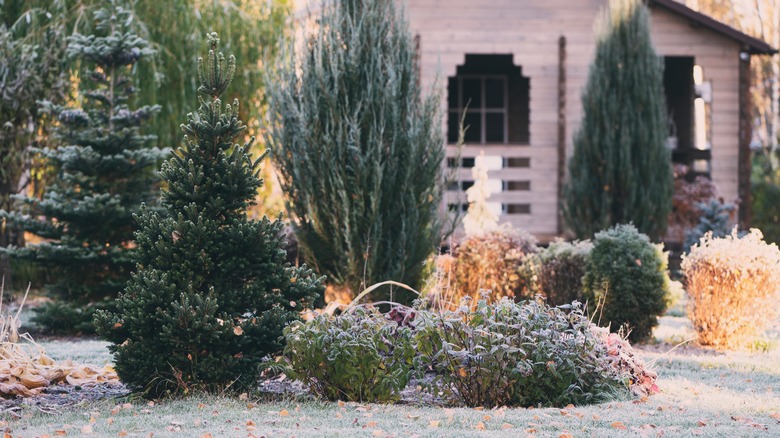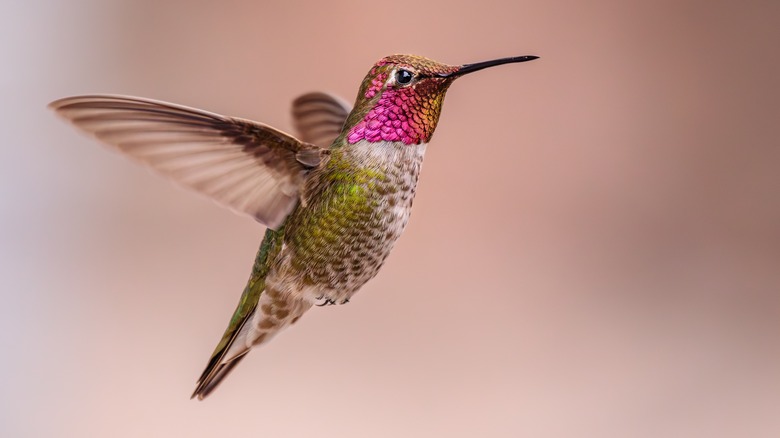The Hummingbird Breed You're Most Likely To Spot In Your Yard In The Winter
During that time of year when the days get shorter and the temperatures dip, it reminds us that winter is indeed on its way. While for many that means plants going bare and nature slowing down, there's one hungry critter in the Western U.S. that'll likely stay through the winter, looking for a sugary meal. Though the springtime is often considered the best time of year to put out your hummingbird feeder, Anna's hummingbirds (Calypte anna) is a persistent visitor which, in recent years, has increasingly stuck around to visit the yards of many in the western states during the winter.
A varietal of hummingbird first observed in 1829, it was named for Anna de Belle Masséna, Duchess of Rivoli who, along with her husband the duke, were avid ornithological collectors. Anna's Hummingbird is native to California, and until the last few decades, stuck to its warmer climes in that state. But since the 1930s, these small voyagers have made their way north into the Pacific Northwest and as far north as southern Alaska. Attracted to the proliferation of urban gardens found year-round in some areas, this distinctive pink-headed hummingbird is content to stay in North America, even through the winter. Though Anna's Hummingbird is Californian, they're very hardy and can withstand snow and freezing temperatures. This is, in part, due to a particular energy-saving behavior they exhibit called "torpor" in which the hummingbird enters into a mini-hibernation. To the unsuspecting eye, it may even look like it's frozen on your feeder! But with a little TLC, your Anna's Hummingbird friends will enjoy staying with you through the winter.
Tips for cold weather hummingbirds
Before urban crawl, Anna's hummingbirds were able to sustain themselves through the winter by feeding on sap and insects, but sadly, human intervention has removed much of those resources. However, on the bright side, human populations have also built environments that contribute to their food source and simultaneously allow them to stay out during western North American winters. They're expected to continue moving northwards in the coming years as human environments allow as well, and some have spotted them in colder climates in Canada!
The simple act of putting out a hummingbird feeder and keeping it stocked through the winter will help Anna's Hummingbirds find the nutrients that they need to survive through the harsher weather, since these little fliers have become increasingly dependent on homemade hummingbird nectar feeders for food. Remember to keep your feeders warmed up to maintain its liquidity; you can hang holiday lights around or above the feeder as a hack to keep the feeder warm or wrap it in bubble wrap or a knitted sleeve to keep frost off. If you're able, also consider moving your feeder to a spot that's protected from winds and frost, too. And If you're in an area where blooms can be nurtured through the winter as well, consider planting some perennials that will fill your yard with hummingbirds throughout the seasons. The Anna's hummingbird will reward you in strides with fun visits during long winter months!

